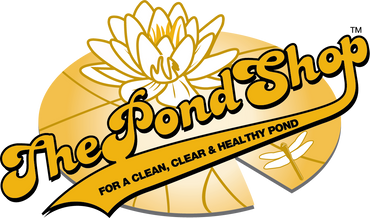Filamentous Algae

There are many different species of Filamentous Algae, but all have a similar growth habit. Filamentous Algae growth begins in the winter and early spring along the bottom in shallow water or attached to rocks, structures or aquatic plants. The single cells in filamentous algae join together into long hair-like strands that grow toward the water surface. By mid-summer, these strands form large mats that trap gases and float to the surface. These floating mats, if left untreated, may cover the entire water body by late summer, causing interference with swimming, fishing, boating or recreational water uses. Excessive Algae can also lead to fish kills in late Summer and Fall as dying algae can consume oxygen from the water body.
Prevention
Excessive growth of Filamentous Algae is caused by a surplus of nutrients in the water from nearby barnyards, crop fields, septic systems, lawns, etc.. To prevent excessive algae growth, it is necessary to reduce fertilizer application near the water's edge, maintain septic systems properly, redirect nutrient-rich runoff away for a pond or lake and maintain a vegetative buffer strip around your pond.
Barley straw has shown to assist in the prevention of filamentous algae growth in some ponds. Barley straw does not kill existing algae blooms. It must be added to the pond in late Fall or early Spring, before the onset of Algae to work best.
Physical/Mechanical Control
Filamentous Algae can be removed by raking or netting the mats from the surface of the water body. While mechanical control is labor intensive and time-consuming, it can be effective on small ponds or lake frontages. Mechanical removal, when used in conjunction with biological and chemical control methods will maximize success. Algae removed from the pond should be collected and taken away from the water so that nutrients are not introduced back into the water.
Biological Control
Beneficial Bacteria Products such as Bio-Buster® or Bio-Clear® and Enzymes such as PZ-900® feed on nutrients in the water making them unavailable for algae growth. Reducing nutrients can help prevent the colonization of nuisance Algae, but will not kill existing Algae growth.
Chemical Control
When used carefully, according to the product label instructions, aquatic algaecides are very safe and effective management tools. The active ingredients that have been successful in treating filamentous algae include copper base compounds such as CutrinePlus, liquid or granular as well as other products such as Hydrothol 191, Green Clean and Copper Sulfate.
CutrinePlus liquid and granular are chelated copper base herbicides that are highly effective on filamentous algae and are safe and easy to use. CutrinePlus liquid or granular do not have water use restrictions. It is recommended that you read the "product label" prior to use. In too high of a dosage, Cutrine Plus can be toxic to specific fish species, mainly trout, koi, and goldfish.
Hydrothol 191 is an aquatic algaecide and herbicide that can be used to control filamentous algae as well as some aquatic plants. Hydrothol 191 is a contact product, meaning that it works quickly and kills all target plant or algae cells that the product comes into contact with. Please read the "product label" prior to use for the proper application rate for your pond or lake frontage.
Green Clean Is a contact algaecide that contains hydrogen peroxide, working as a fast-acting ingredient that suppresses and controls algae in contained waters bodies such as ponds, water gardens, fish ponds, ornamental waterfalls, fountains. This product is completely safe for Koi, Goldfish, and Trout. Green Clean is also safe for decorative plants such as water lily, water hyacinth or other decorative plants.
Copper Sulfate is a common algae treatment because of its availability, effectiveness, and low cost. However, in very hard water, copper will bind with the calcium and precipitate out of solution rendering it ineffective as an algaecide. Before using copper is it best to test the pond water’s alkalinity and adjust copper treatments to alkalinity concentrations.
Alternative Control Methods
Pond Dyes and colorants reduce aquatic plant growth by limiting sunlight penetration and reducing photosynthesis.
Water Aeration has also been used as a mechanical approach to hinder algae. The added oxygen will accelerate the decomposition process of nutrients that feed algae blooms, mix and agitate the water to prevent the stagnant, warmer waters that filamentous algae preferred and can encourage phosphorous to bind preventing it from becoming available within the water column for algae use and growth.
